School Journal Level 2 May 2019
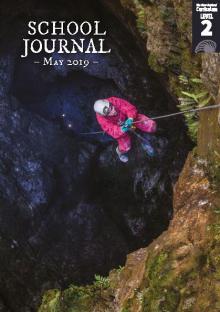
Look inside this issue
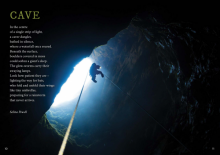
Series: School Journal Level 2 May 2019
Learning area: English
Curriculum level: 2
Reading year level: 4
Topics: abseiling, caves, caving, environment, exploration, imagery, metaphor, poetry, simile, speleology, underground
In: School Journal Level 2 May 2019
Publication date: May 2019
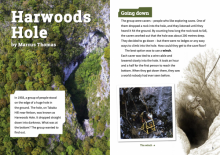
Harwoods Hole
by Marcus Thomas
In 1958, a group of intrepid cavers descended into Harwoods Hole, a huge vertical chasm on Takaka Hill. At the bottom, they discovered a spectacular environment, with beautiful stalactites and waterfalls. A month later, they discovered a second cave nearby. The cavers proved that the two cave systems were connected and created a way to travel between them. The themes of exploration and discovery make this article an enthralling read. It’s also an excellent introduction to the information texts students will be encountering more frequently as they progress through school.
Series: School Journal Level 2 May 2019
Learning area: English
Curriculum level: 2
Reading year level: 4
Category: Non-fiction
Related titles: “Our Rocks Rock!” SJ L2 Apr 2013 | “Marcus Thomas: New Zealand Caveman” SJSL L4 2015 | “Underground Explorers” SJ L4 May 2015 |
Topics: adventure, cave life, caves, caving, caving gear, change, environment, exploration, geology, Harwoods Hole, history, limestone, marble, solution caves, speleology, stalactites, Starlight Cave, Takaka, underground, waterfalls
In: School Journal Level 2 May 2019
Publication date: May 2019
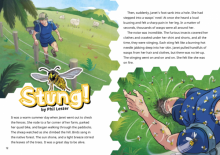
Stung!
by Phil Lester
illustrations by Scott Pearson
When Janet set out to check the fences on her remote sheep farm in Taumaranui, she had no idea that her life would soon be in danger. Based on a real event, “Stung!” recounts what happened when Janet stepped on a wasps’ nest and was attacked by a swarm of angry insects. With no cellphone reception and no one there to help, Janet’s survival depended on incredible stamina and determination. Not surprisingly, the after-effects of the attack have been long lasting.
Series: School Journal Level 2 May 2019
Learning area: English
Curriculum level: 2
Reading year level: 4
Related titles: “The Jungle in My Garden” JJ 52 | The Buzz of Bees (various) Connected L2 May 2012 | “Shipwrecked” SJ L2 Oct 2013 | “Lost in the Bush” SJ L2 Nov 2016 | “Wasps” SJ L2 May 2019
Topics: courage, danger, dramatisation, emergency, endurance, farming, Janet Kelland, paramedics, pests, rural, stings, survival, true story, wasps, wasps’ nests
In: School Journal Level 2 May 2019
Publication date: May 2019
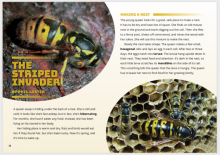
Series: School Journal Level 2 May 2019
Learning area: Science
Curriculum level: 2
Reading year level: 4
Topics: biodiversity, drones, environment, hibernation, insects, larvae, life cycle, pests, predators, pupae, queen wasp, wasps, wasps’ nests, worker wasps
In: School Journal Level 2 May 2019
Publication date: May 2019

Where's Toki?
by André Ngāpō
illustrations by Phillip Paea
Cousins Hoani, Leilani, and Mitch are searching for their dog, Toki. When they realise he is trapped in a cave, they think about going in to rescue him. However, the potential danger and the possibility that the cave might be tapu stops them. Hoani, the narrator, shows particular sensitivity towards, and respect for, tikanga Māori. The story includes a retelling of a traditional story about Ruakuri Cave at Waitomo (Tainui/Ngāti Maniapoto). “Where’s Toki?” has a happy ending, with Toki escaping the cave from another exit and bounding back to rejoin the delighted children.
Series: School Journal Level 2 May 2019
Learning area: English
Curriculum level: 2
Reading year level: 4
Category: Fiction
Related titles: “Kurī” SJ L2 Oct 2015 | “Harwoods Hole” SJ L2 May 2019 | “Lost in the Bush” SJ L2 Nov 2016 | “Tū” SJ L2 Aug 2015 | “Rātā me te Rākau” JJ 57 | “Heartbeat” SJ L3 June 2012 |
Topics: bush, caves, courage, danger, dogs, lost, loyalty, pets, responsibility, Ruakuri, Tāne-mahuta, tapu, te ao Māori, te reo Māori, traditional stories, whānau
In: School Journal Level 2 May 2019
Publication date: May 2019
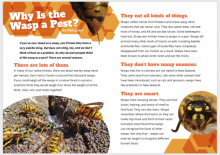
Why is the Wasp a Pest?
by Phil Lester
If you’ve ever stood on a wasp, you’ll know they have a very painful sting. But bees can sting, too, and we don’t think of bees as a problem. So why do most people think of the wasp as a pest?
Series: School Journal Level 2 May 2019
Learning area: Science
Curriculum level: 2
Reading year level: 4
Category: Non-fiction
Related titles: “The Jungle in My Garden” JJ 52 | The Buzz of Bees (various) Connected L2 May 2012 | “Shipwrecked” SJ L2 Oct 2013 | “Lost in the Bush” SJ L2 Nov 2016 | “Wasps” SJ L2 May 2019
Topics: biodiversity, environment, insects, native forests, pests, predators, senses, wasps, wasps’ nests
In: School Journal Level 2 May 2019
Publication date: May 2019


 Literacy Online home
Literacy Online home
